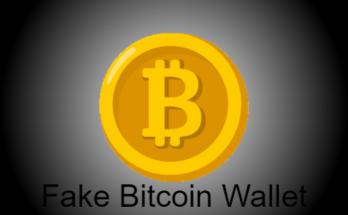Monero is a privacy-oriented cryptocurrency touted as one of the world’s earliest privacy coins. The development of Monero (and probably that of other privacy cryptocurrencies) is said to have been influenced by the need to improve upon Bitcoin’s lack of privacy.
With hundreds of crypto traders having discovered that Bitcoin transactions aren’t anonymous, it is now clear that there are ways one can ferret out the specific individual behind any Bitcoin transaction.
Nowadays, hundreds and thousands of crypto traders crave optimum privacy for their transactions and in the light of this, it has become inevitable for such traders to embrace Monero and certain other private coins.
⇒Join us on Telegram for more Sure and Accurate football-winning tips every day...click here
While this article reviews Monero, it provides you with a detailed guide for creating a Monero wallet as well as the instructions for storing and transferring XMR (Monero coins).
Storing Monero: Creating a Monero Wallet with Ease
Until recently, the procedure for storing Monero often appeared awkward, considering the command lines, etc., involved in running the Monero wallet. With the ease recently incorporated into the storage of Monero, you now need to comply with only a few steps to set up and run a Monero wallet.
- Visit the link here
- After landing on the (wallet) account creation page, tap the create account button
- The page provides vital information on the essence of safely storing your private key login details
- Having carefully read and digested this information, you should note down your private login key
- You’ll find an input field below the login key. Input the private login key (you noted down earlier) into this field
- With the above done, you’ve successfully created your Monero wallet
How to Withdraw XMR into MyMonero Wallet
Once your Monero wallet has been duly set up, you may follow the instructions below to withdraw XMR into it:
- Log into your Monero (wallet) account and scroll to the top of the account overview
- You’ll find an address therein. You should note down this address
- Following that, you should head to the exchange account from which you want to receive Monero coins (XMR)
- Input the address (you earlier noted from the account overview) in the withdrawal section of the exchange
- Subsequently, you’ll be provided with instructions to help you complete the withdrawal
- Alternatively, you may want to fund your Monero wallet by receiving XMR coins from a benefactor, probably a friend. In this case, you’ll have to forward the address (at the top of your account overview) to the friend so that they can send you XMR as required
How to Send XMR
You may want to transfer XMR (from your Monero wallet) to a friend. In that case, you should follow the instructions below:
- Log into your Monero wallet
- Locate and click the Send button
- Supply (in the provided field) the address of your beneficiary –you may obtain this address from any of the following: (i) the beneficiary (who’s probably a friend), (ii) a payment service that supports Monero, (iii) an exchange
- Enter (in the field tagged “amount”) the amount of XMR you’d like to send to the beneficiary
- Select your preferred level of privacy for the transaction –Note that you’ll be charged a high transaction fee if you select a high “ring size”
- Following that, you should click the Send Payment button
Pros of Monero
Besides being one of the best privacy-oriented cryptocurrencies, Monero offers a pretty number of other benefits as outlined below:
- Monero transactions are untraceable
- Monero transactions cannot be linked to a particular individual
- Monero users can determine who is able to view/access their transactions. If circumstances warrant that you show somebody your transaction record (probably for legal reasons), Monero allows you to share the access to your transaction record with the person.
Cons of Monero
Monero does have a number of drawbacks associated with it and below are some of these drawbacks:
- Miners are substantially centralized on Monero even as Monero boasts ASIC resistance
- Monero is yet to be substantially accepted probably because it is difficult to provide adequately secure storage for Monero coins
- Monero isn’t compatible with any hardware wallets yet. This is to say that it’s probably only few wallets that are designed to support Monero and quite sadly, none of them happens to be a hardware wallet
Conclusion
Hopefully, reading this article has helped you find out what Monero is. Although there are a few observable drawbacks associated with Monero, the cryptocurrency is likely a great match for crypto traders craving adequate privacy for their transactions.




